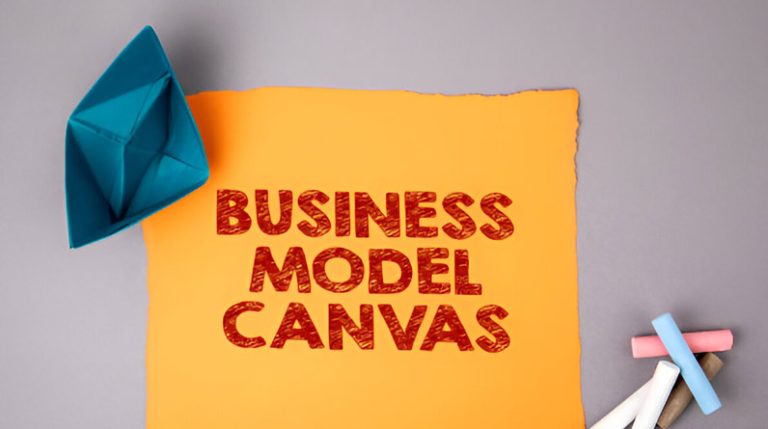The Business Model Canvas (BMC) is a widely used strategic tool that helps entrepreneurs and businesses design, evaluate, and pivot their business models effectively. Originally developed by Alexander Osterwalder, the BMC simplifies complex business strategies into a one-page visual framework.
However, despite its popularity, many discussions on the BMC focus on its traditional components without considering its modern applications in an ever-evolving digital and sustainability-driven economy.
Understanding the Business Model Canvas
The BMC consists of nine key building blocks:
- Customer Segments – Identifying target audiences.
- Value Propositions – Defining unique offerings.
- Channels – Choosing distribution and communication methods.
- Customer Relationships – Managing engagement strategies.
- Revenue Streams – Determining income sources.
- Key Resources – Recognizing essential assets.
- Key Activities – Highlighting core operations.
- Key Partnerships – Establishing strategic collaborations.
- Cost Structure – Managing expenses.
While this framework has traditionally helped businesses develop viable models, we will now examine how integrating sustainability and digital transformation can enhance its relevance in today’s business environment.
Related: The Future of Business Strategy
The Evolving Business Model Canvas: A Modern Perspective
1. Sustainability-Driven Business Model Canvas
In today’s world, sustainability is more than a buzzword—it’s a necessity. Companies integrating sustainability into their BMC not only benefit the environment but also attract eco-conscious consumers and investors.
How to integrate sustainability:
- Customer Segments: Identify environmentally conscious buyers.
- Value Propositions: Offer sustainable, ethically sourced products.
- Channels: Utilize carbon-neutral delivery methods.
- Customer Relationships: Build trust through transparency and sustainability reporting.
- Revenue Streams: Introduce circular economy initiatives (e.g., rental services, product recycling).
- Key Resources: Invest in renewable energy, sustainable raw materials.
- Key Activities: Implement sustainable production processes.
- Key Partnerships: Collaborate with green suppliers and NGOs.
- Cost Structure: Reduce waste and optimize energy consumption.
Real-World Example: Patagonia
Outdoor clothing brand Patagonia integrates sustainability into its BMC by using recycled materials, promoting a repair-and-reuse program, and donating a percentage of profits to environmental causes.
2. The Digital Transformation Business Model Canvas
Digital transformation reshapes industries by leveraging technology to enhance business operations. Integrating digital elements into the BMC ensures competitiveness in a technology-driven world.
How to integrate digital transformation:
- Customer Segments: Expand to digital-native audiences.
- Value Propositions: Offer digital services like AI-powered recommendations.
- Channels: Use e-commerce, social media, and mobile apps.
- Customer Relationships: Leverage AI chatbots, personalization, and omnichannel communication.
- Revenue Streams: Adopt subscription models, in-app purchases.
- Key Resources: Invest in cloud computing, cybersecurity.
- Key Activities: Implement data-driven decision-making.
- Key Partnerships: Collaborate with tech companies and digital marketing agencies.
- Cost Structure: Optimize costs through automation.
Real-World Example: Netflix
Netflix transformed the entertainment industry by shifting from DVD rentals to a subscription-based digital streaming service, leveraging AI for content recommendations and data analytics.
Comparative Table: Traditional vs. Modern Business Model Canvas
| BMC Component | Traditional Approach | Modern Approach (Sustainability & Digital) |
| Customer Segments | Broad demographic focus | Niche eco-conscious & digital users |
| Value Propositions | Competitive pricing, quality | Sustainability & digital experiences |
| Channels | Retail stores, print ads | E-commerce, social media, apps |
| Customer Relationships | Customer service calls | AI-driven personalization, eco-transparency |
| Revenue Streams | Product sales, services | Subscription, circular economy, digital goods |
| Key Resources | Physical stores, factories | Renewable energy, cloud computing |
| Key Activities | Manufacturing, logistics | Digital content, automation |
| Key Partnerships | Suppliers, distributors | Green tech firms, digital agencies |
| Cost Structure | Fixed costs, labor | Lean operations, tech investment |
The Future of the Business Model Canvas
With rapid advancements in technology and increasing environmental awareness, businesses must rethink their traditional BMC. A hybrid model that combines sustainability and digitalization will be the key to long-term success.
Key takeaways:
- Sustainable practices attract loyal customers and investors.
- Digital transformation enhances efficiency and scalability.
- The modern BMC helps businesses remain relevant in dynamic markets.
Conclusion
The Business Model Canvas remains a powerful tool for strategic planning, but its relevance is evolving. By integrating sustainability and digital transformation, businesses can future-proof their operations and create lasting value. Whether you’re a startup or an established enterprise, rethinking your BMC through these modern lenses will drive growth and competitiveness.
Frequently Asked Questions (FAQ)
What is the Business Model Canvas (BMC)?
The Business Model Canvas is a strategic tool that visually outlines a business’s key components, including customer segments, value propositions, revenue streams, and operational structure.
How does the Business Model Canvas help businesses?
It simplifies complex business models into a single-page framework, allowing businesses to identify opportunities, optimize operations, and pivot strategies efficiently.
How can sustainability be integrated into the Business Model Canvas?
Businesses can adopt eco-friendly practices by using sustainable resources, reducing waste, engaging with green suppliers, and implementing circular economy models.
What role does digital transformation play in the Business Model Canvas?
Digital transformation modernizes business operations through e-commerce, AI-driven personalization, automation, and data-driven decision-making.
Can startups use the Business Model Canvas?
Yes, startups benefit greatly from the BMC as it provides a clear structure for developing and testing business ideas before full-scale implementation.
What are some real-world examples of companies using a modern Business Model Canvas?
Companies like Patagonia (sustainability-focused) and Netflix (digital transformation) have successfully adapted their BMC to remain competitive.
How does the Business Model Canvas differ from a traditional business plan?
A business plan is a detailed document, while the BMC is a visual and dynamic tool that allows quick modifications and iterative strategy development.


